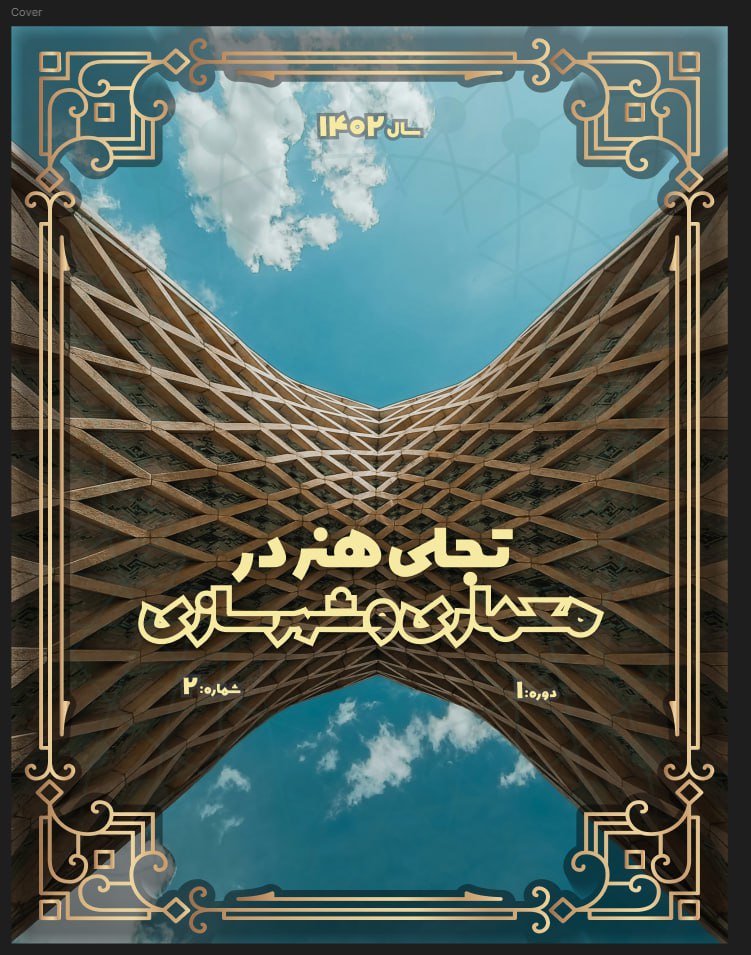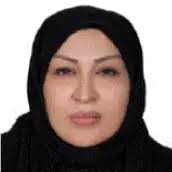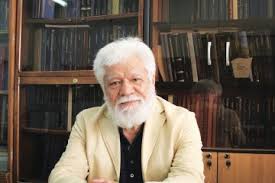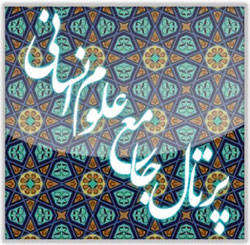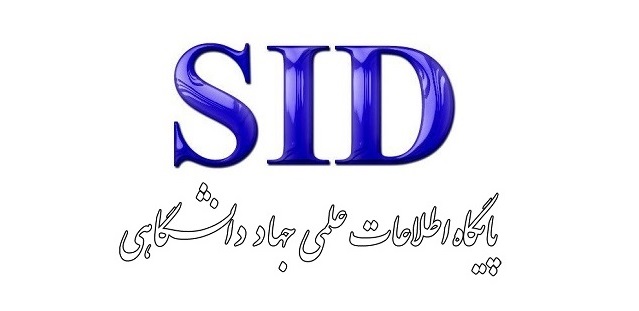تحلیلی بر وضعیت سیما و منظر محلات شهری در راستای برنامهریزی فضایی مطلوب (مطالعه موردی: محله سیروس در منطقه 12 شهرداری تهران)
گسترش سریع شهرها بدون رعایت ضوابط طراحی از دلایل مهم در بینظمی شهرهای کنونی است. در کلانشهرهای ایران، شهرها بهواسطه رشد سریع، فرصت پیرایش فضائی را از دست دادهاند و آشفتگی بصری در آنها نمایان است. عدم توجه به سیما و منظر شهر و کیفیت فضاهای شهری از مسائل جدی شهر تهران به شمار میآید. به دلیل عدم توجه به اصول سیما و منظر شهری و نقش آن در برنامهریزی فضایی، بسیاری از طرحهای ارائهشده نتوانستهاند به نیازهای شهروندان پاسخ دهند. محلهی سیروس که از هستههای پیشین شهر تهران هست جز سایتهایی است که به لحاظ دارا بودن بافت تاریخی قابل بررسی است. هدف پژوهش تحلیلی عوامل تأثیرگذار بر وضعیت سیما و منظر محله سیروس در راستای برنامهریزی فضایی مطلوب است. مرکز محله سیروس بهعنوان محدوده مطالعاتی در راستای بازطراحی مجدد سیما و منظر در راستای برنامهریزی فضایی مطلوب انتخابشده است. پژوهش از نظر هدف کاربردی و از نظر روش کیفی- کمی است. جامعهی آماری را کارشناسان تشکیل میدهند. روش نمونهگیری از نوع گلوله برفی بوده است. اطلاعات تحقیق از طریق روش کتابخانهای جمعآوریشده است. ابزار جمعآوری اطلاعات پرسشنامه است. برای تحلیل دادهها از تیم پانل دلفی استفاده شده است. نتایج نشان میدهد که وضعیت سیما و منظر محله سیروس با تأکید بر برنامهریزی فضایی نامطلوب است و بیشترین معیارها امتیاز کمتر از میانگین عدد 3 را به دست آوردهاند. در مجموع از میان 35 معیار 22 معیار در وضعیت نامطلوب و 13 معیار در وضعیت مطلوب قرارگرفته است.
مطالعه تطبیقی مفهوم زیبایی شناسی در معماری پایدار و هنرهای تجسمی با تأکید بر نظریه زیباشناسی محیطی (مطالعه موردی پردیس سینماگالری ملت)
درک زیبایی در معماری و هنرهای تجسمی طی قرون اخیر از رویکردهای فرمالیستی فاصله گرفته و بهسوی نگاهی تجربهمحور، زمینهگرا و محیطی سوق یافته است. در این میان، نظریه زیباییشناسی محیطی بهعنوان چارچوبی میانرشتهای، امکان تحلیل همزمان عناصر بصری، حسی، فرهنگی و زیستمحیطی را در فهم زیبایی فراهم میکند. این مقاله با هدف بررسی تقاطع میان اصول زیباییشناسی محیطی و طراحی پایدار، به تحلیل تطبیقی معماری پایدار و هنرهای تجسمی معاصر با تأکید بر نمونه موردی پردیس سینماگالری ملت میپردازد.هدف اصلی پژوهش، تبیین چگونگی بازتاب اصول زیباییشناسی محیطی در سه سطح ساختار بصری، معنا و تجربه زیستمحیطی در معماری پایدار است. همچنین نشان داده میشود که چگونه تلفیق دیدگاههای رودلف آرنهایم (ادراک ساختاری) و کارل گروسر (زیباییشناسی زمینهمند)، میتواند مبنای نظری طراحی فضاهایی پایدار با هویت فرهنگی قرار گیرد.پژوهش به روش کیفی و تحلیلی، با رویکرد تطبیقی انجام شده و از تحلیل موردی پروژه معماری پردیس ملت برای بررسی تطابق نظریه با مصداق عینی بهره گرفته است.یافتهها نشان میدهد که معماری پایدار موفق زمانی تحقق مییابد که تجربه ادراکی مخاطب، ساختار فرمی فضا، و پیوند آن با زمینه فرهنگی و زیستمحیطی در قالبی یکپارچه طراحی شود. در پردیس ملت، وحدت میان فرم، عملکرد، تجربه حسی، و تعامل با بافت شهری و طبیعی، نمود عینی نظریه زیباییشناسی محیطی را محقق کرده است.
تبیین الگوهای بهینۀ استقرار عملکردی در پلهای پیادهمحور چندمنظوره با بهرهگیری از نحو فضا در ایران
پژوهش حاضر با هدف تبیین چارچوبی علمی برای ساماندهی بهینۀ فضاهای عملکردی در پلهای پیادهمحور چندمنظوره در ایران انجام شده است. در این پژوهش مسئلۀ اصلی آن است که چگونه میتوان الگویی فضایی ارائه کرد که ضمن پاسخ به الزامات عملکردی پل، کیفیت تجربۀ کاربر و امکان شکلگیری تعاملات اجتماعی را در این عرصهها ارتقاء دهد. پلهای پیاده در بسترهای شهری دارای رودخانه و آبراهه، ظرفیت آن را دارند که فراتر از یک گذرگاه عمل کرده و به عرصههایی برای مکث و رویداد بدل شوند؛ تحقیقات نشان میدهند که اغلب مطالعات در جهان و به ویژه ایران بر جنبههای سازهای و کالبدی پلها متمرکز بوده و کمتر بر پایه جنبههای عملکردی و تحلیلهای پیکربندی فضایی در پلهای چندمنظوره بررسی شده است. در حالیکه طراحی این فضاهای چندمنظوره نیازمند نگرشی مولد است که بتواند روابط پیکربندی را بهصورت عینی و قابلسنجش بازنمایی کند. بنابراین، پژوهش حاضر از روش کمّی «نحو فضا» بهعنوان چارچوب نظری و ابزار تحلیلی بهره میگیرد؛ رویکردی که با مدلسازی و ارزیابی روابط پیکربندی فضایی، امکان پیشبینی عرصههایی برای شکلگیری رویداد، تعامل و خلوتگزینی را فراهم میآورد. در این چارچوب، فضاهای عملکردی پل بهصورت نقاطی در شبکۀ فضایی به همراه پیوندهایشان در محیط گرسهاپر-راینو مدلسازی شده و بر پایۀ الگوهای رایج سازماندهی فضایی، سناریوهای مختلف پیکربندی تدوین شدهاند. سپس شاخصهای کلیدی نحو فضا از طریق شبیهسازی محاسباتی استخراج و مبنای ارزیابی مقایسهای سناریوها قرار گرفته است. این فرایند با ترکیب تحلیل نظری و طراحی مولد، زمینه را برای ارائۀ الگویی دادهمحور و قابل بومیسازی جهت سازماندهی بهینۀ پلهای پیادهمحور در بسترهای مختلف ایران فراهم میآورد.
مقایسه سیستم سنتی و پوستههای صاف از نظر مدتزمان ساخت و هزینه در ساختمانهای مسکونی
هدف این پژوهش مقایسه عملکرد سازهای، زمان اجرا و هزینه ساخت در سیستمهای سنتی و سیستمهای پوستهای صاف در ساختمانهای مسکونی است. این پژوهش به روش توصیفی–تحلیلی انجام شده و دادهها از طریق تحلیل عددی غیرخطی با نرمافزار Abaqus و بررسی میدانی محدود بهدست آمدهاند. مدلسازی شامل یک ساختمان بنایی سهطبقه و یک سیستم پوستهای با ضخامت ۷ تا ۱۰ سانتیمتر بوده است. همچنین برای مقایسه هزینه ساخت از فهرستبها و روش متره مهندسی استفاده شده و تحلیل رفتار لرزهای با بهرهگیری از مدلسازی ایزولاسیون اصطکاکی و استاندارد 2800 انجام شده است. در ادامه، بارگذاری حرارتی، خواص بتن C25، ویژگیهای زمین و فرایند ساخت اسکلت فلزی پوستهای نیز مورد ارزیابی قرار گرفتهاند. نتایج نشان داد سیستم سنتی به دلیل وزن بالا، ضخامت زیاد دیوارها و ضعف در مقاومت کششی و برشی، عملکرد مناسبی در برابر نیروهای لرزهای ندارد. در مقابل، سیستم پوستهای با بهرهگیری از بتن مسلح، شکلپذیری بالاتر و ضخامت کم، مقاومت مطلوبی ارائه داد. تحلیلها نشان داد که در شرایط آتشسوزی، سازه سنتی طی کمتر از ۱۰ دقیقه ناپایدار میشود، در حالیکه سیستم پوستهای بهدلیل محصورشدگی بتن در ستونها و افزایش مقاومت کمانشی عملکرد بهتری دارد. از نظر اقتصادی، مصرف فولاد در سیستم پوستهای حدود ۵۵٪ کمتر از سازه فولادی و هزینه ساخت آن در مقایسه با سازه سنتی حدود ۳۵٪ کمتر گزارش شد. همچنین اتصالات با سختکننده قطری حدود ۳۰٪ بارپذیری بیشتری نسبت به سختکنندههای موازی نشان دادند. نتایج تحقیق نشان میدهد که سیستم پوستهای از نظر مقاومت لرزهای، رفتار حرارتی، صرفهجویی در مصالح و کاهش هزینه ساخت، گزینهای مناسبتر نسبت به سیستم سنتی است. همچنین بهکارگیری اتصالات مناسب، طراحی همگن پوستهها و استفاده از تحلیل غیرخطی میتواند ایمنی سازه و پایداری آن را بهطور چشمگیری افزایش دهد.
مطالعه و شناسایی دانش گیاهی در حفاظت آثار تاریخی براساس فرهنگ جهانگیری (سده 11 هجری قمری)
کتاب "فرهنگ جهانگیری" اثر انجو شیرازی، یکی از منابع ماندگار فرهنگی، تاریخی و علمی سده 11 هجری قمری است که حاوی اطلاعات گستردهای درباره گیاهان و کاربردهای متنوع آنها در زندگی روزمره و درمان سنتی است. این پژوهش با بهره گیری از ویراستاری عفیفی به تحلیل جامع و طبقه بندی گیاهان مطرح شده در این کتاب پرداخته شده است. هدف، در این واکاوی با دامنه گسترده پیش رو، دستیابی به شناسایی و کاربرد گیاهان مرتبط با حوزه حفاظت شامل حفاظت فیزیکی، شیمیایی و زیستی در" فرهنگ جهانگیری" است که مورد بررسی قرار گرفته است این پژوهش از نظر نتایج، کاربردی است و دادههای پژوهش به صورت کتابخانهای و اسنادی است. علاوه بر شناسایی گیاهان مرتبط با حفاظت آثار کاغذی، وجود لهجه، گویش و اسامی متعدد در یک سرزمین، از یک سو و تشابهات واژهها در بین دو یا چند کشور و سرزمین، از سویی دیگر، موجب این امر شده که برخی از کلمات، واژهها و جملات، در ظاهر با یکدیگر متفاوت امّا در بطن، یکی باشد. مانند کلمه"آزاد"، که به نام های"سرو"،"سوسن"،"ارژن"و "بادام درختی" نامیده میشود. و یا"مشکدانه"، که به تازی،"سُعد"، به هندی،"موته" گفته میشود و نیز، "آنسته" هم خوانده میشود. دانش مربوط به این تشابهات پنهان واژه ها، میتواند کاربرد گیاه، نامهای مختلف در مکانهای متفاوت، پژوهشگر را در استفاده از آنها در حوزه حفاظت بخوبی یاری کند.
ارزیابی نقش مصالح باکیفیت و پایدار در کاهش هزینههای ساخت و نگهداری ساختمانهای سبز
هدف این پژوهش ارزیابی تأثیر سیستمهای نمای دوپوسته و کامپوزیتهای بتن هیبریدی سبز (HP-G-HyFRC) بر کاهش هزینههای ساخت و نگهداری و مصرف انرژی در ساختمانهای سبز است. این پژوهش با استفاده از مدلسازی انرژی در نرمافزار COMFEN5 و تحلیل چرخه عمر (LCA) انجام شد. پنج سناریوی مختلف شامل ترکیب نمای جامد (SW)، نمای دوپوسته (DSF)، شیشه تکجداره (SG)، شیشه دوجداره (DG) و عایق پلیاستایرن انبساطی (EP) مورد بررسی قرار گرفت. واحد عملکرد شامل یک اتاق خواب استاندارد بود و شاخصهایی مانند مصرف انرژی سرمایشی، انتشار CO₂، ضریب انتقال حرارت (U-factor) و انرژی دربرداشته در تولید مواد اندازهگیری شد. ویژگیهای مکانیکی کامپوزیتها نیز از طریق آزمایشهای خمشی بررسی گردید. یافتهها نشان داد سیستم DSF مصرف انرژی سرمایشی را نسبت به SW به میزان 10.6% کاهش میدهد. ترکیب DSF+DG منجر به کاهش 18% مصرف انرژی نسبت به حالت پایه (SW+SG) شد. افزودن EP در DSF موجب کاهش اضافی 14% انرژی گردید. با وجود افزایش انرژی دربرداشته HP-G-HyFRC نسبت به بتن معمولی، انتشار CO₂ در سیستم DSF حدود 16% کمتر بود که ناشی از استفاده از سرباره و خاکستر بادی بهعنوان جایگزین سیمان است. نتایج مکانیکی نیز نشان داد که DSF سختی و داکتیلیته بالاتری نسبت به نمای جامد دارد. پژوهش حاضر نشان میدهد که ترکیب سیستم نمای دوپوسته با کامپوزیتهای بتن هیبریدی سبز میتواند بهطور مؤثر مصرف انرژی، انتشار آلایندهها و هزینههای نگهداری را کاهش داده و عملکرد حرارتی و دوام ساختمانهای سبز را بهبود دهد. استفاده از مصالح پایدار مبتنی بر مواد زائد صنعتی علاوه بر مزایای محیطی، از نظر اقتصادی نیز در بلندمدت بهصرفه است.
بهرهمندی از اقلیم و محیط بر نوآوری هنری (با تکیه بر هنر منطقه کوزهکنان)
وضع جغرافیایی در هر هنری که سابقهای طولانی در سرزمینی دارد، بهعنوان یکی از عوامل مهم و تأثیرگذار شناخته میشود. هنر، زادهی نیازهای عملی و معنوی انسان است و وجود منابع طبیعی نقش بسزایی در شکلگیری و رشد آن دارد. کوزهکنان، منطقهای تاریخی در استان آذربایجان شرقی و در فاصلهی ده کیلومتری شهر شبستر است. این منطقه مهد هنر سفالگری بوده و از گذشتههای دور، این صنعت بهصورت خانوادگی و حرفهای در آن رواج داشته است. روش تحقیق در این پژوهش، توصیفی–تحلیلی است و گردآوری اطلاعات به شیوهی کتابخانهای و میدانی انجام گرفته است. دادهها از طریق مشاهدهی مستقیم، بازدید از کارگاهها و محوطههای سفالگری، بررسی آثار کشفشده و تولیدات معاصر، و نیز مراجعه به اسناد و منابع میراث فرهنگی شبستر گردآوری شدهاند. هدف از این پژوهش، شناخت هنر سفالگری در منطقهی کوزهکنان، یکی از نواحی شهرستان شبستر در استان آذربایجان شرقی است؛ منطقهای که با وجود پیشینهی غنی خود، در مقایسه با سایر شهرهای سفالخیز کشور کمتر مورد توجه قرار گرفته است. یافتههای این پژوهش نشان میدهد که هنر سفالگری در کوزهکنان در مسیر کاربردهای روزمره و به طبیعیترین شکل ممکن به حیات خود ادامه داده است. تولید سفال در این منطقه بهصورت خودجوش، بر اساس نیازها و سلیقههای مردم انجام میگرفت و تنوع در شکل و کاربرد ظروف، نشان از پویایی و گستردگی این هنر دارد. استادکاران مجرب در کارگاههای سنتی کوزهکنان، سفالگری را نه تنها بهعنوان یک شغل بلکه بهعنوان بخشی جداییناپذیر از زندگی خود میدانستند. ظروف سفالی تولیدشده در این منطقه، بیانگر غنای مواد اولیه، دقت در انتخاب مصالح و ظرافت دست هنرمندان آن است؛ آثاری که با سادگی، طبیعی بودن و اصالت خود، جلوهای خاص به هنر محلی بخشیدهاند. بررسی سفالهای کشفشده از دوران گذشته نیز نشان میدهد که همانند دیگر مراکز سفالگری شمالغرب ایران، از نقشمایههای گیاهی، حیوانی و هندسی در تزئینات استفاده میشده است، با این تفاوت که بیشتر سفالهای کوزهکنان ساده، بیلعاب و با کارکردهای کاربردی ساخته شدهاند.
مکانیابی بهینه مدارس با رویکرد کاهش خطرپذیری: تلفیق GIS و روشهای تصمیمگیری چندمعیاره
هدف پژوهش ارائه یک الگوی جامع برای مکانیابی ایمن مدارس در برابر مخاطرات طبیعی با بهرهگیری از ترکیب GIS و روشهای تصمیمگیری چندمعیاره است. این مطالعه ماهیت توصیفی–تحلیلی داشته و بر پایه رویکرد چندمعیاره انجام شد. دادهها از طریق پرسشنامه مقایسات زوجی ANP میان ۳۵ خبره معماری، شهرسازی و مدیریت بحران گردآوری گردید. پس از اعتبارسنجی دادهها با آزمونهای KMO و بارتلت و تحلیلهای EFA و CFA، وزن معیارها با ANP تعیین شد. سپس معیارهای تأییدشده وارد مدل TOPSIS گردید و بلوکهای شهری نوشهر رتبهبندی شدند. در مرحله نهایی، نتایج در محیط GIS تلفیق و نقشههای اولویت مکانی مدارس تولید شد. نتایج نشان داد شاخص KMO برابر ۰٫۶۴ و آزمون بارتلت در سطح کمتر از ۰٫۰۱ معنادار بود که کفایت دادهها برای تحلیل عاملی را تأیید کرد. تحلیل همبستگی پیرسون بین عوامل اصلی نشان داد رابطه خطی معناداری وجود ندارد (p=0.34). تحلیل عاملی اکتشافی دو عامل با بارهای عاملی قابل قبول استخراج کرد. مدل TOPSIS نشان داد بلوک A (۰٫۷۳۳۶) و بلوک D (۰٫۷۲۲۰) بالاترین اولویت را دارند، در حالی که بلوک B (۰٫۲۰۳۲) در پایینترین رتبه قرار گرفت. همچنین تحلیل GIS وجود خوشهبندی فضایی معنادار در توزیع امتیازات TOPSIS را تأیید کرد. نتایج تأکید میکند که انتخاب مکان مدارس باید فراتر از یک تصمیم کالبدی باشد و بهطور همزمان معیارهای فضایی، جمعیتی و معماری را در نظر گیرد. ترکیب GIS و مدلهای چندمعیاره توانست تصویر دقیقی از اولویتهای مکانی شهر نوشهر ارائه دهد و الگویی کاربردی برای طراحی مدارس تابآور فراهم آورد که میتواند مبنایی برای ارتقای ایمنی و کیفیت فضاهای آموزشی باشد.
دربارهی مجله
تجلی هنر در معماری و شهرسازی یک نشریه علمی-پژوهشی میانرشتهای است که به بررسی تقاطع میان بیان هنری و محیط ساختهشده اختصاص دارد. این نشریه بستری بینالمللی برای دانشمندان، معماران، مهندسان شهرسازی، طراحان، هنرمندان و پژوهشگران فراهم میکند تا مطالعات، بینشها و رویکردهای نوآورانه خود را که موجب غنیسازی و توسعه رشتههای معماری و شهرسازی میشود، ارائه دهند. این نشریه به صورت فصلنامه منتشر میشود و هر شماره شامل مقالات، مطالعات موردی، نقدها و مقالات تحلیلی است که به پر کردن شکاف میان نظریههای هنری و کاربردهای عملی در معماری و طراحی میپردازد و به رویکردی یکپارچه در طراحی، کارکرد، زیباییشناسی و تجربه انسانی در فضاهای ساختهشده میپردازد.
